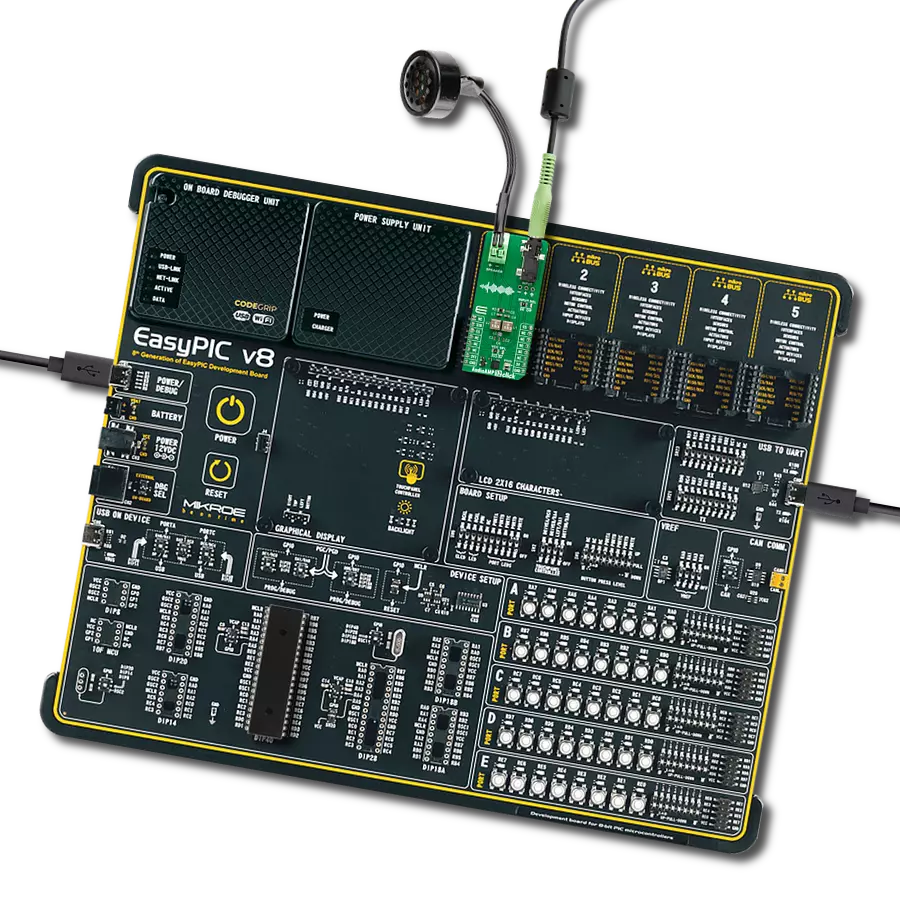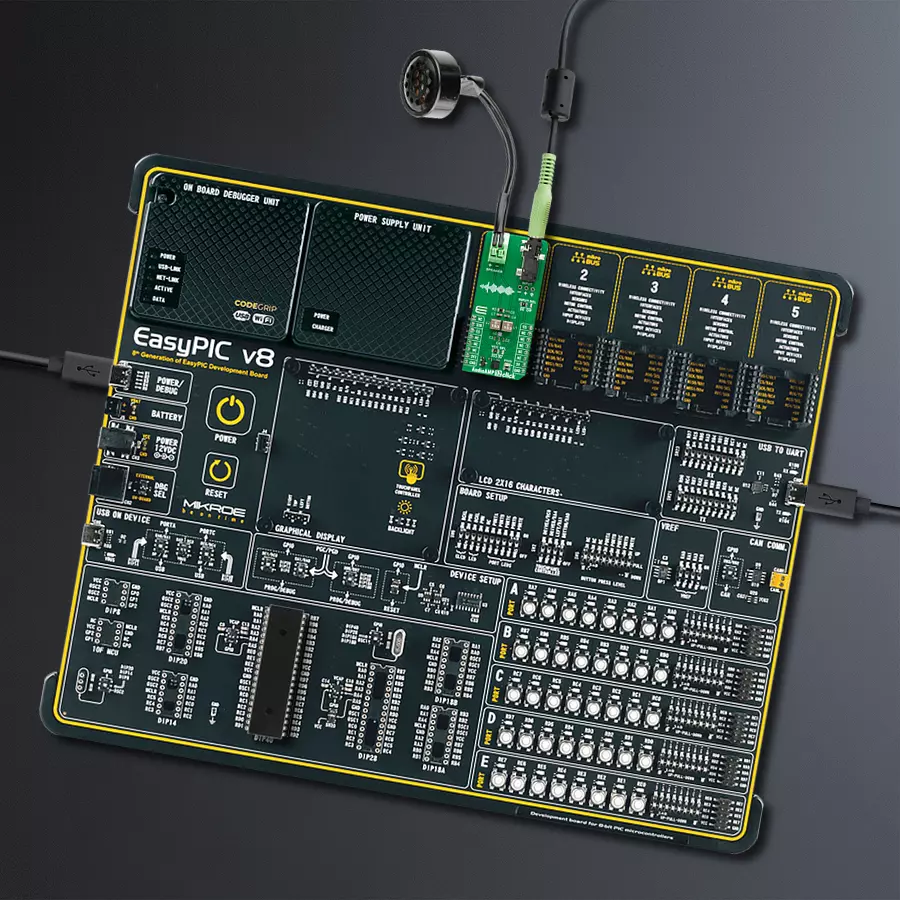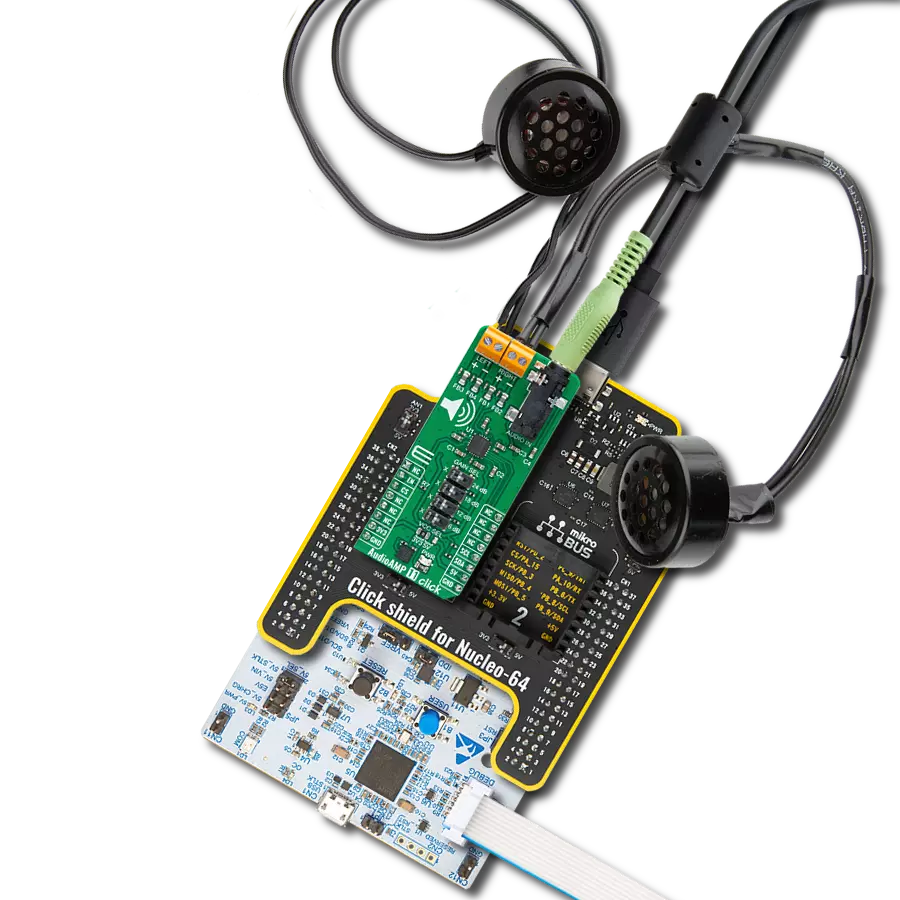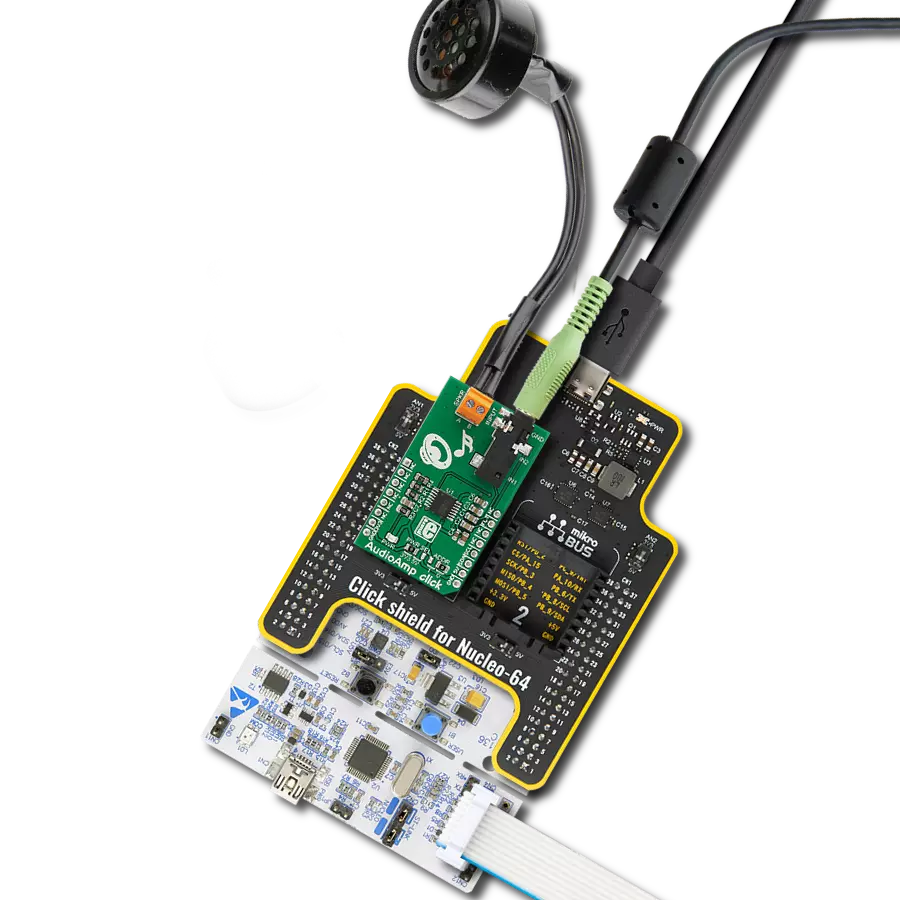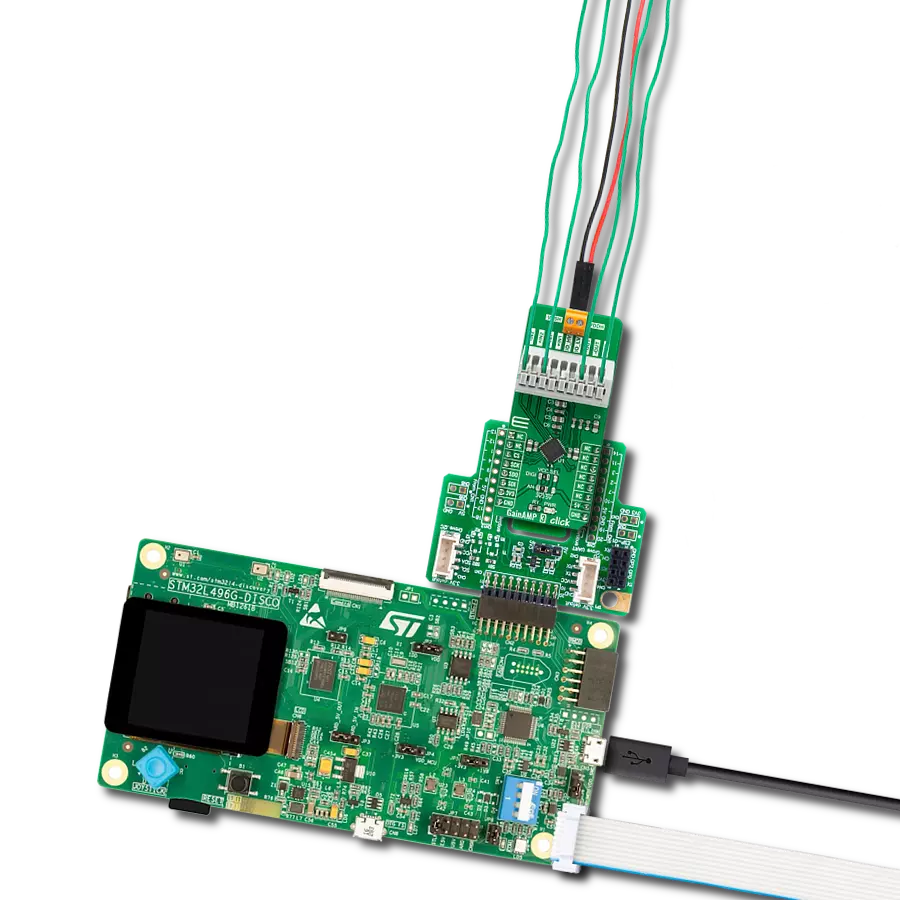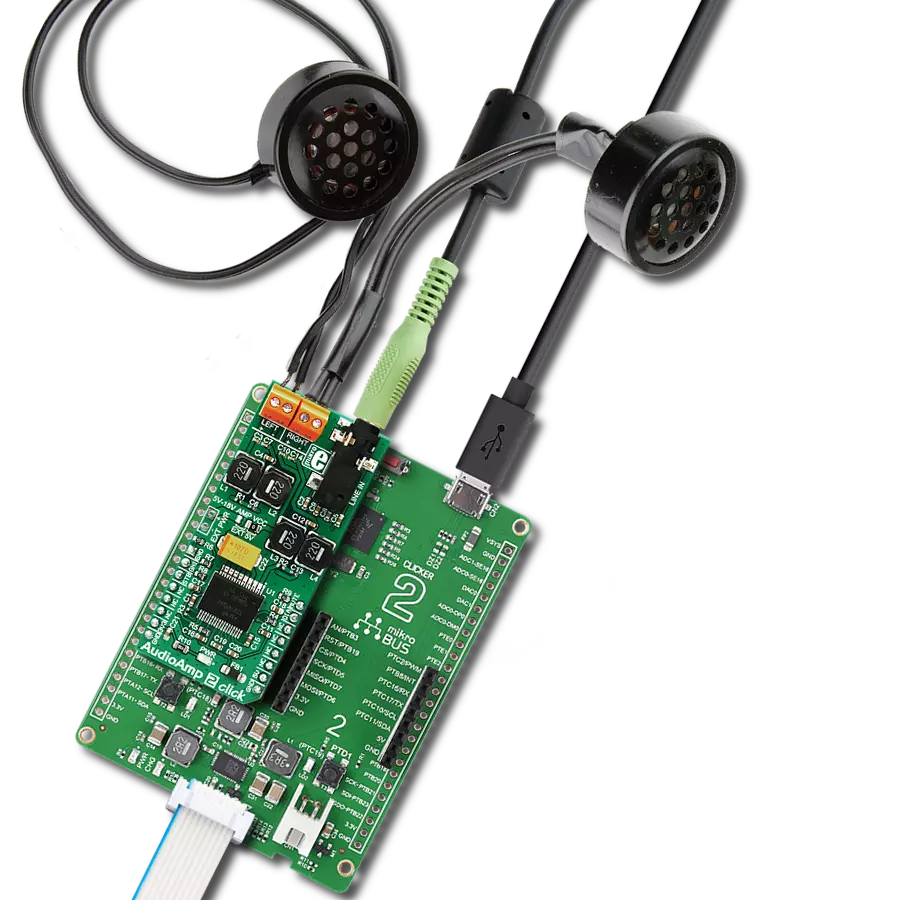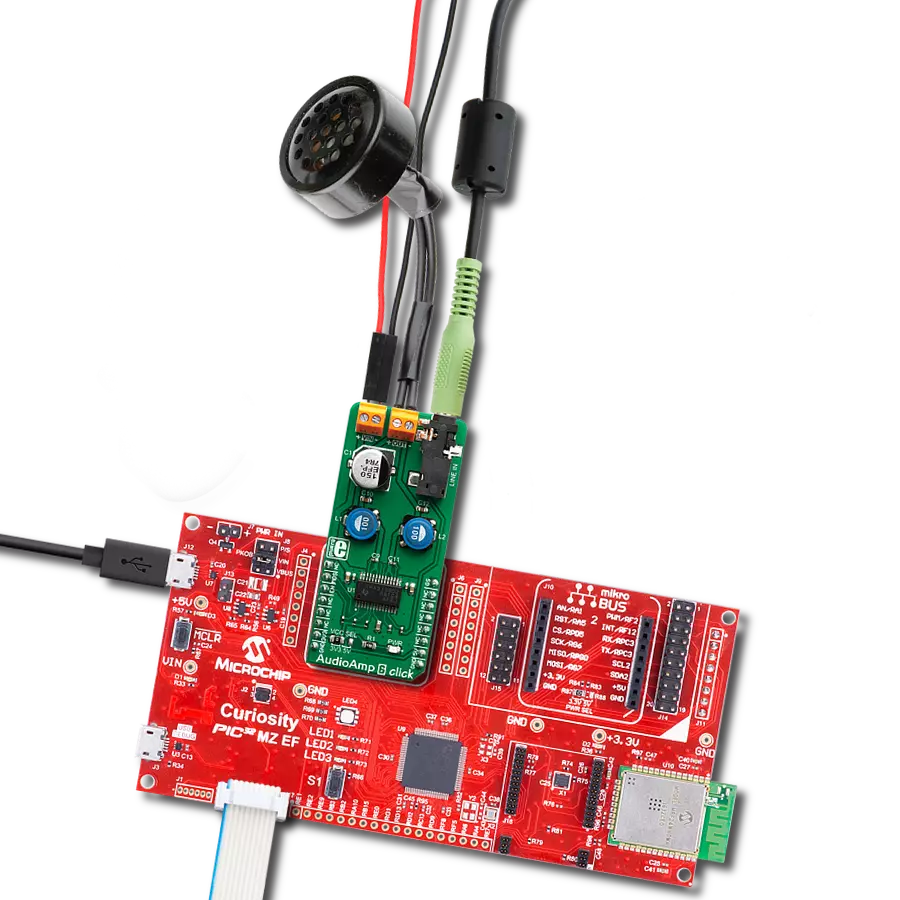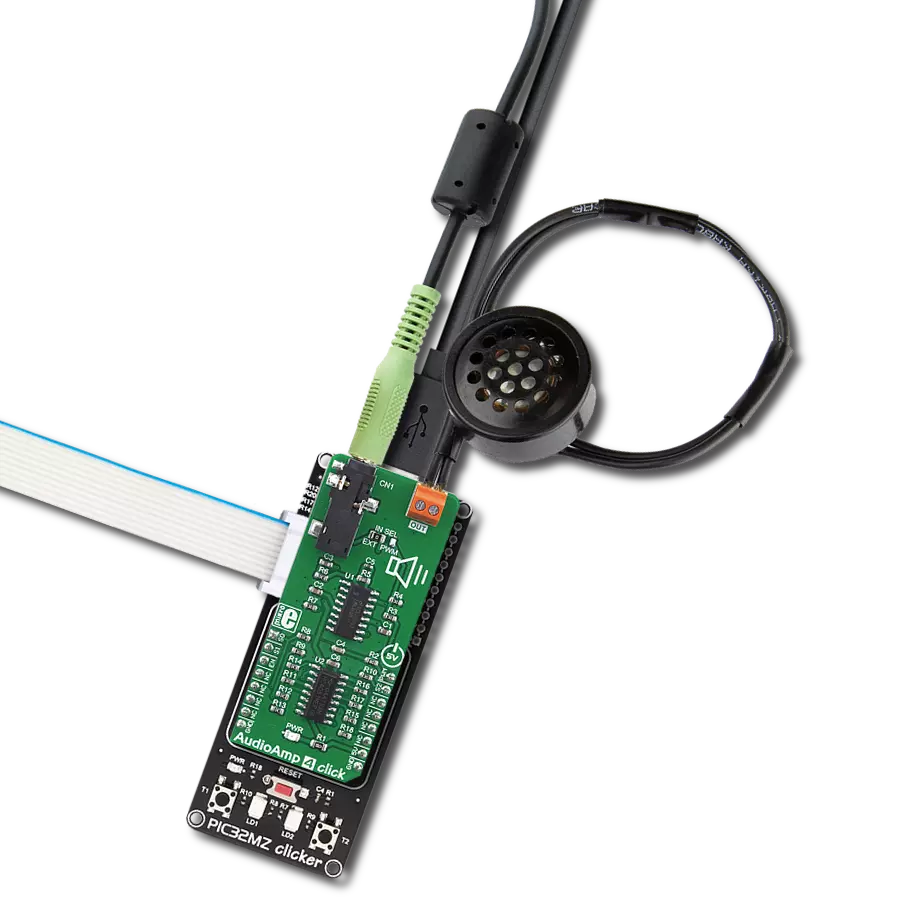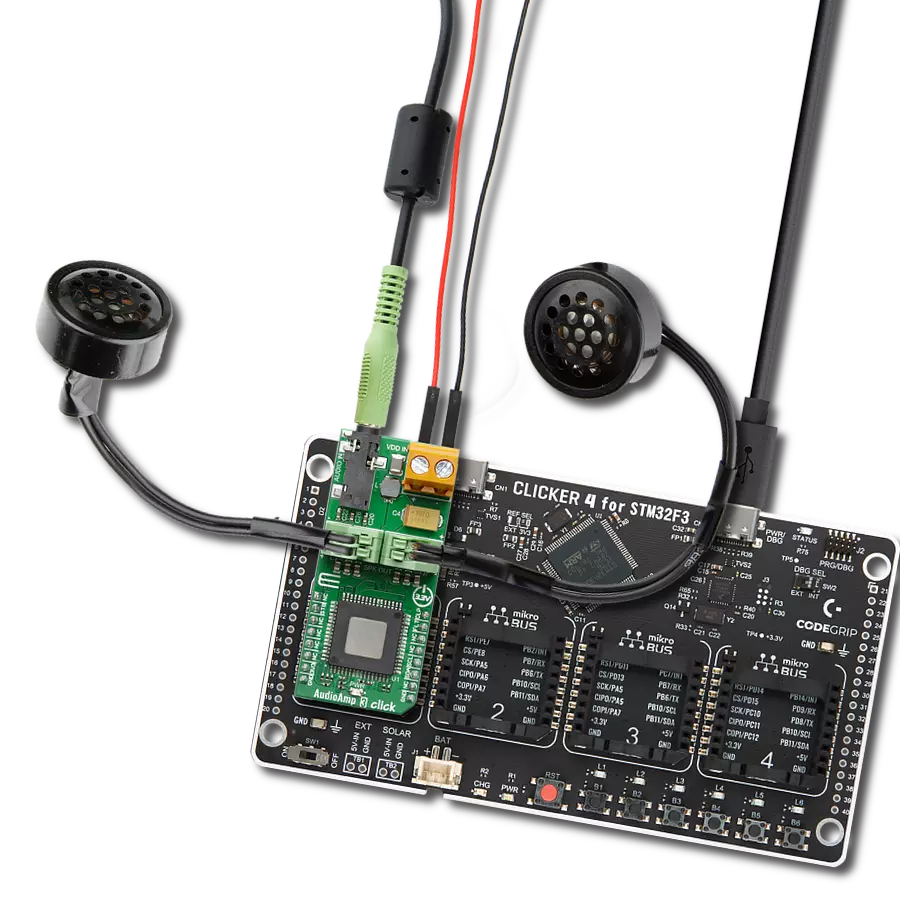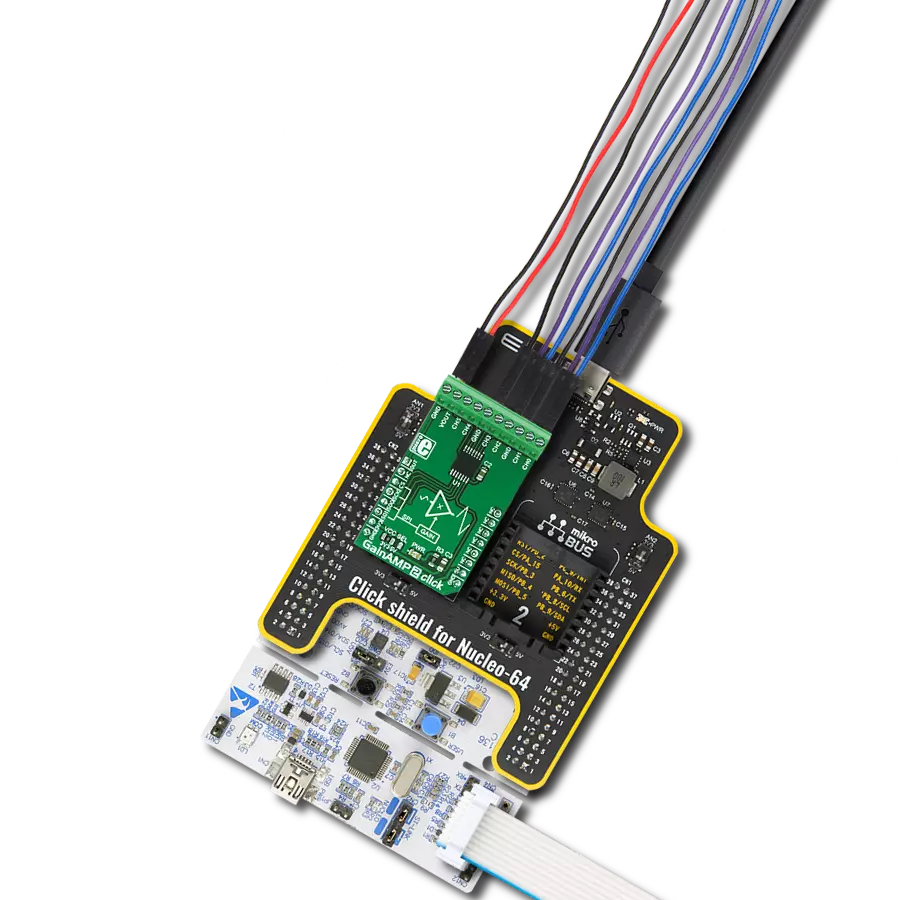Immerse yourself in a world of pristine sound – our amplifying solution, your passport to sonic excellence.
A
A
Hardware Overview
How does it work?
AudioAMP 12 Click is based on the TS2007FC, a filter-free class-D audio amplifier from STMicroelectronics. The amplifier can work in differential configuration or single-ended input configuration. You can choose one over the INPUT SEL jumper, where the SE (single-ended) is set by default. The amplifier is a monolithic, fully differential input/output amplifier, which includes a common mode feedback loop that controls the output bias value to average it in correlation to the DC common mode input voltage range. This, in turn, allows the amplifier always to have a maximum output voltage swing and maximize the output power. Compared to the single-ended topology, the output is four times higher for
the same power supply voltages. The amplifier allows switching between two fixed gains: 6 or 12dB (2 or 4V/V gain). It also features thermal shutdown protection, output short-circuit protection, and a low pop-and-click noise, where the signal-to-noise ratio is typically 90dB. The pop-and-click reduction circuitry and low ON/OFF switching noise typically allow the amplifier to start within 1ms. You can also choose the Standby mode function, which keeps the current consumption down to 1μA. This Click board™ features a standard 3.5mm audio jack to connect the audio input. In addition to the audio jack, there is also an unpopulated 3-pin header if you want to connect the audio input by other means.
AudioAMP 12 Click allows connecting one speaker over the onboard terminal. This Click board™ uses general-purpose input/output pins to communicate with the host MCU. Using the GS pin, you can select one of the available gains with IOs logic states. The STB pin is a Standby pin with active LOW logic. This Click board™ can operate with either 3.3V or 5V logic voltage levels selected via the VCC SEL jumper. This way, both 3.3V and 5V capable MCUs can use the communication lines properly. Also, this Click board™ comes equipped with a library containing easy-to-use functions and an example code that can be used as a reference for further development.
Features overview
Development board
EasyPIC v8 is a development board specially designed for the needs of rapid development of embedded applications. It supports many high pin count 8-bit PIC microcontrollers from Microchip, regardless of their number of pins, and a broad set of unique functions, such as the first-ever embedded debugger/programmer. The development board is well organized and designed so that the end-user has all the necessary elements, such as switches, buttons, indicators, connectors, and others, in one place. Thanks to innovative manufacturing technology, EasyPIC v8 provides a fluid and immersive working experience, allowing access anywhere and under any
circumstances at any time. Each part of the EasyPIC v8 development board contains the components necessary for the most efficient operation of the same board. In addition to the advanced integrated CODEGRIP programmer/debugger module, which offers many valuable programming/debugging options and seamless integration with the Mikroe software environment, the board also includes a clean and regulated power supply module for the development board. It can use a wide range of external power sources, including a battery, an external 12V power supply, and a power source via the USB Type-C (USB-C) connector.
Communication options such as USB-UART, USB DEVICE, and CAN are also included, including the well-established mikroBUS™ standard, two display options (graphical and character-based LCD), and several different DIP sockets. These sockets cover a wide range of 8-bit PIC MCUs, from the smallest PIC MCU devices with only eight up to forty pins. EasyPIC v8 is an integral part of the Mikroe ecosystem for rapid development. Natively supported by Mikroe software tools, it covers many aspects of prototyping and development thanks to a considerable number of different Click boards™ (over a thousand boards), the number of which is growing every day.
Microcontroller Overview
MCU Card / MCU
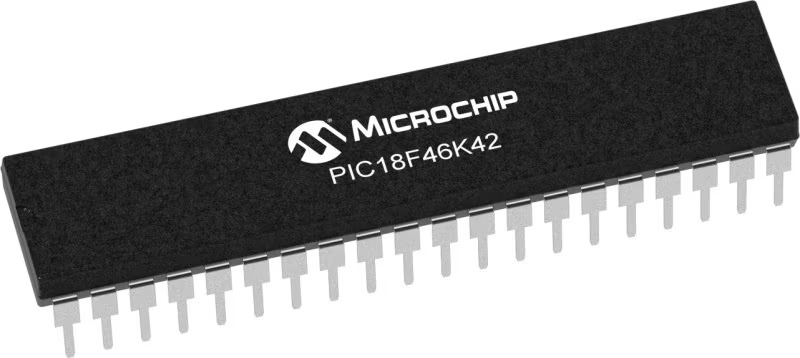
Architecture
PIC
MCU Memory (KB)
64
Silicon Vendor
Microchip
Pin count
40
RAM (Bytes)
4096
Used MCU Pins
mikroBUS™ mapper
Take a closer look
Click board™ Schematic
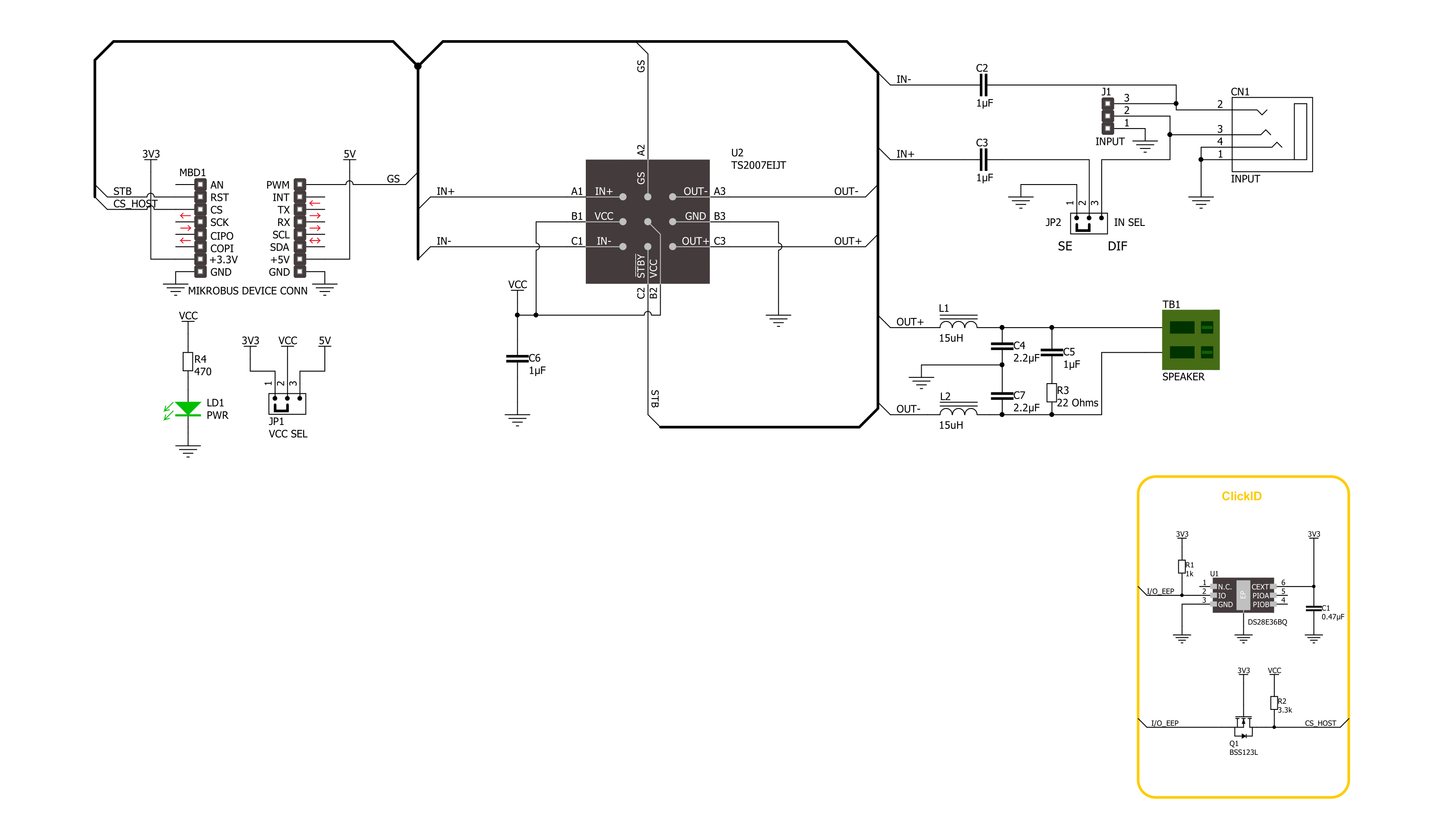
Step by step
Project assembly
Software Support
Library Description
This library contains API for AudioAMP 12 Click driver.
Key functions:
audioamp12_change_gain- AudioAMP 12 changes the gain function.audioamp12_gain_select- AudioAMP 12 select gain level function.audioamp12_set_mode_operation- AudioAMP 12 set operation mode function.
Open Source
Code example
The complete application code and a ready-to-use project are available through the NECTO Studio Package Manager for direct installation in the NECTO Studio. The application code can also be found on the MIKROE GitHub account.
/*!
* @file main.c
* @brief AudioAMP 12 Click Example.
*
* # Description
* This example demonstrates the use of AudioAMP 12 Click board™.
* The library contains an API for switching between two gain settings
* and device control selection between operation and standby mode.
*
* The demo application is composed of two sections :
*
* ## Application Init
* Initialization of GPIO module and log UART. After driver initialization,
* the app sets default settings performs a power-up sequence, and sets the sound volume to 6 dB.
*
* ## Application Task
* The app performs circles the volume switch between two gain settings,
* 6 dB or 12 dB, every 5 seconds.
* Results are being sent to the UART Terminal, where you can track their changes.
*
* @author Nenad Filipovic
*
*/
#include "board.h"
#include "log.h"
#include "audioamp12.h"
static audioamp12_t audioamp12; /**< AudioAMP 12 Click driver object. */
static log_t logger; /**< Logger object. */
void application_init ( void )
{
log_cfg_t log_cfg; /**< Logger config object. */
audioamp12_cfg_t audioamp12_cfg; /**< Click config object. */
/**
* Logger initialization.
* Default baud rate: 115200
* Default log level: LOG_LEVEL_DEBUG
* @note If USB_UART_RX and USB_UART_TX
* are defined as HAL_PIN_NC, you will
* need to define them manually for log to work.
* See @b LOG_MAP_USB_UART macro definition for detailed explanation.
*/
LOG_MAP_USB_UART( log_cfg );
log_init( &logger, &log_cfg );
log_info( &logger, " Application Init " );
// Click initialization.
audioamp12_cfg_setup( &audioamp12_cfg );
AUDIOAMP12_MAP_MIKROBUS( audioamp12_cfg, MIKROBUS_1 );
if ( DIGITAL_OUT_UNSUPPORTED_PIN == audioamp12_init( &audioamp12, &audioamp12_cfg ) )
{
log_error( &logger, " Communication init." );
for ( ; ; );
}
audioamp12_default_cfg ( &audioamp12 );
log_info( &logger, " Application Task " );
}
void application_task ( void )
{
audioamp12_gain_select( &audioamp12, AUDIOAMP12_GAIN_6_DB );
log_printf( &logger, " Gain set to 6 dB.\r\n" );
Delay_ms ( 1000 );
Delay_ms ( 1000 );
Delay_ms ( 1000 );
Delay_ms ( 1000 );
Delay_ms ( 1000 );
audioamp12_gain_select( &audioamp12, AUDIOAMP12_GAIN_12_DB );
log_printf( &logger, " Gain set to 12 dB.\r\n" );
Delay_ms ( 1000 );
Delay_ms ( 1000 );
Delay_ms ( 1000 );
Delay_ms ( 1000 );
Delay_ms ( 1000 );
}
int main ( void )
{
/* Do not remove this line or clock might not be set correctly. */
#ifdef PREINIT_SUPPORTED
preinit();
#endif
application_init( );
for ( ; ; )
{
application_task( );
}
return 0;
}
// ------------------------------------------------------------------------ END
